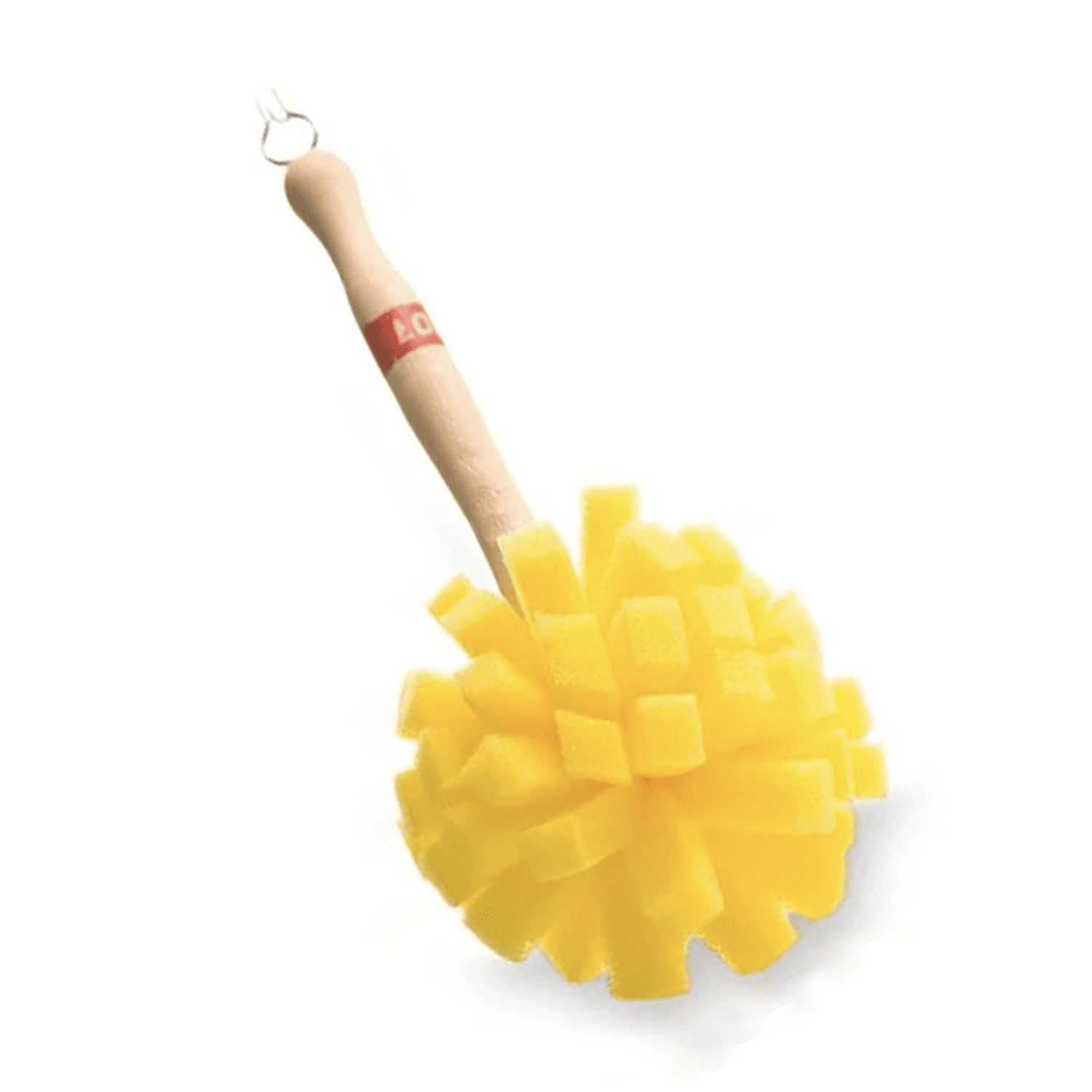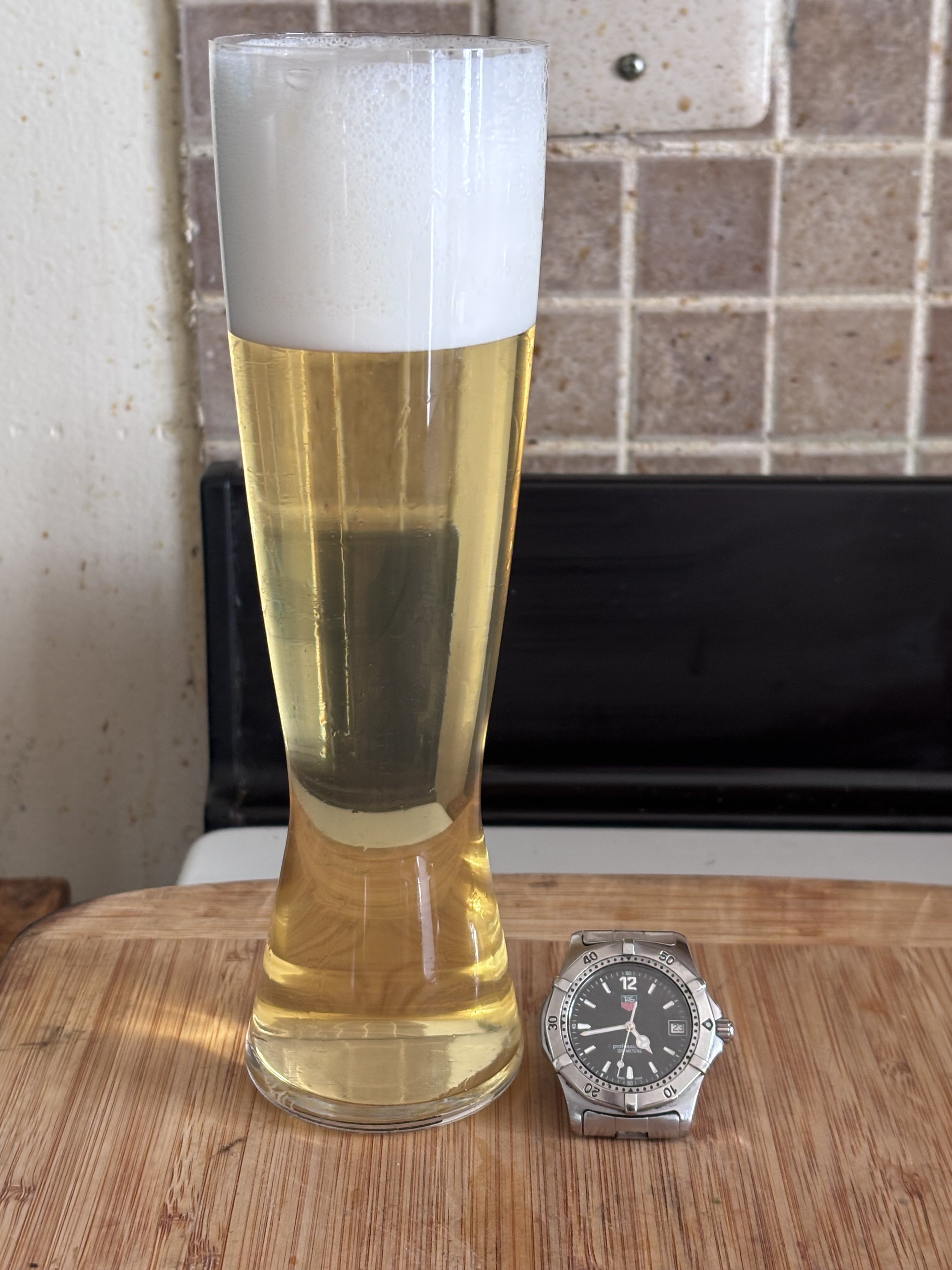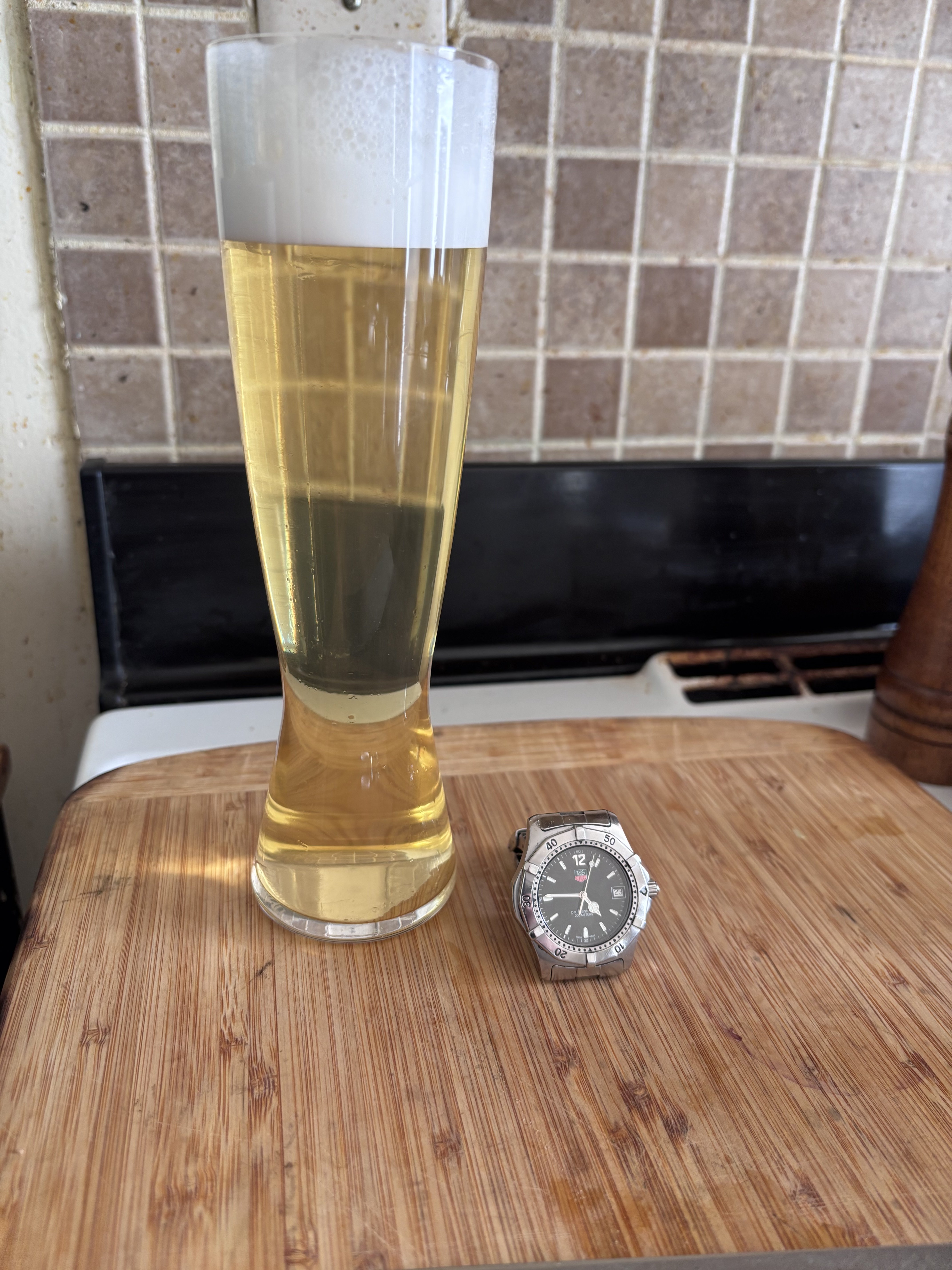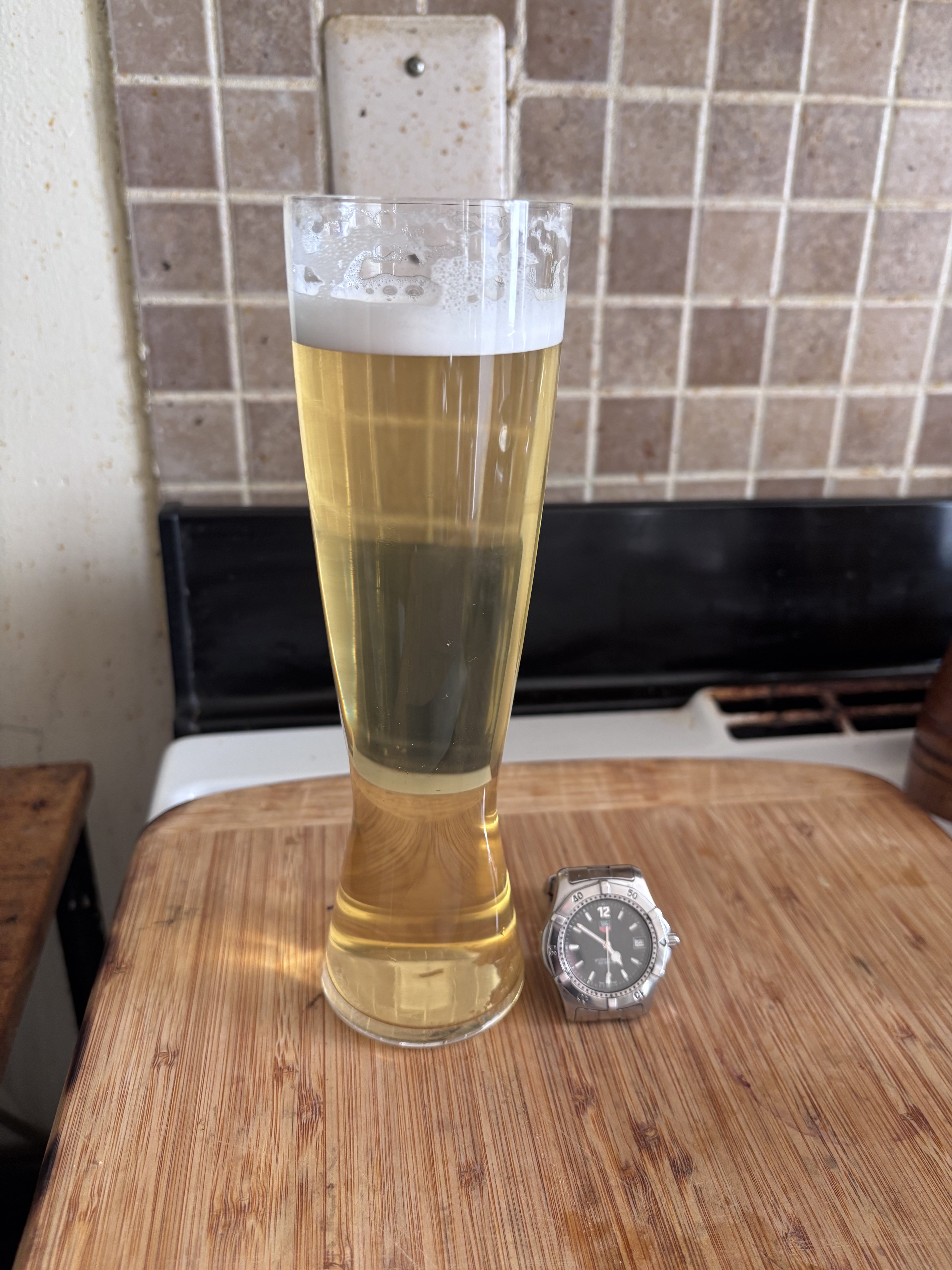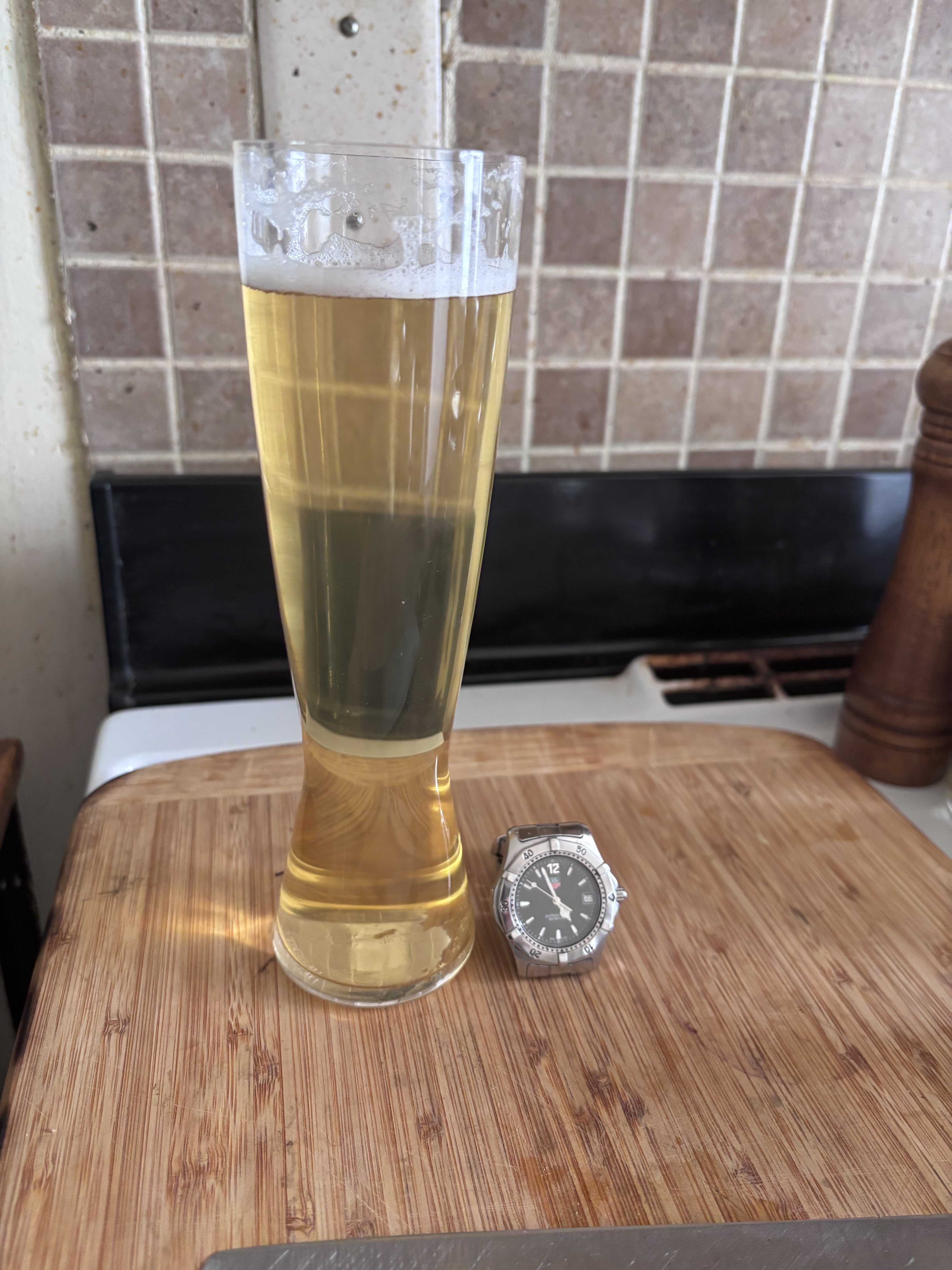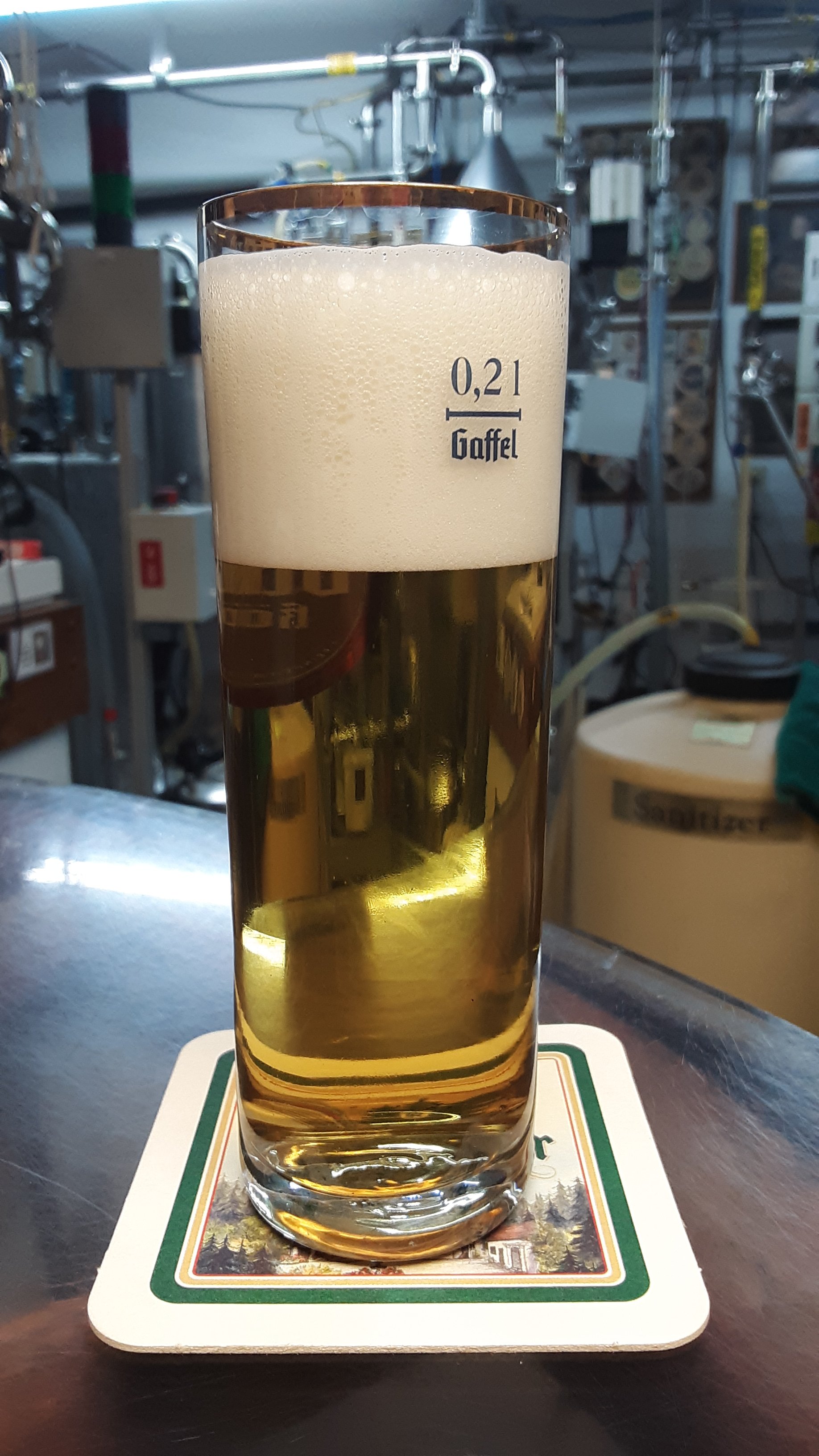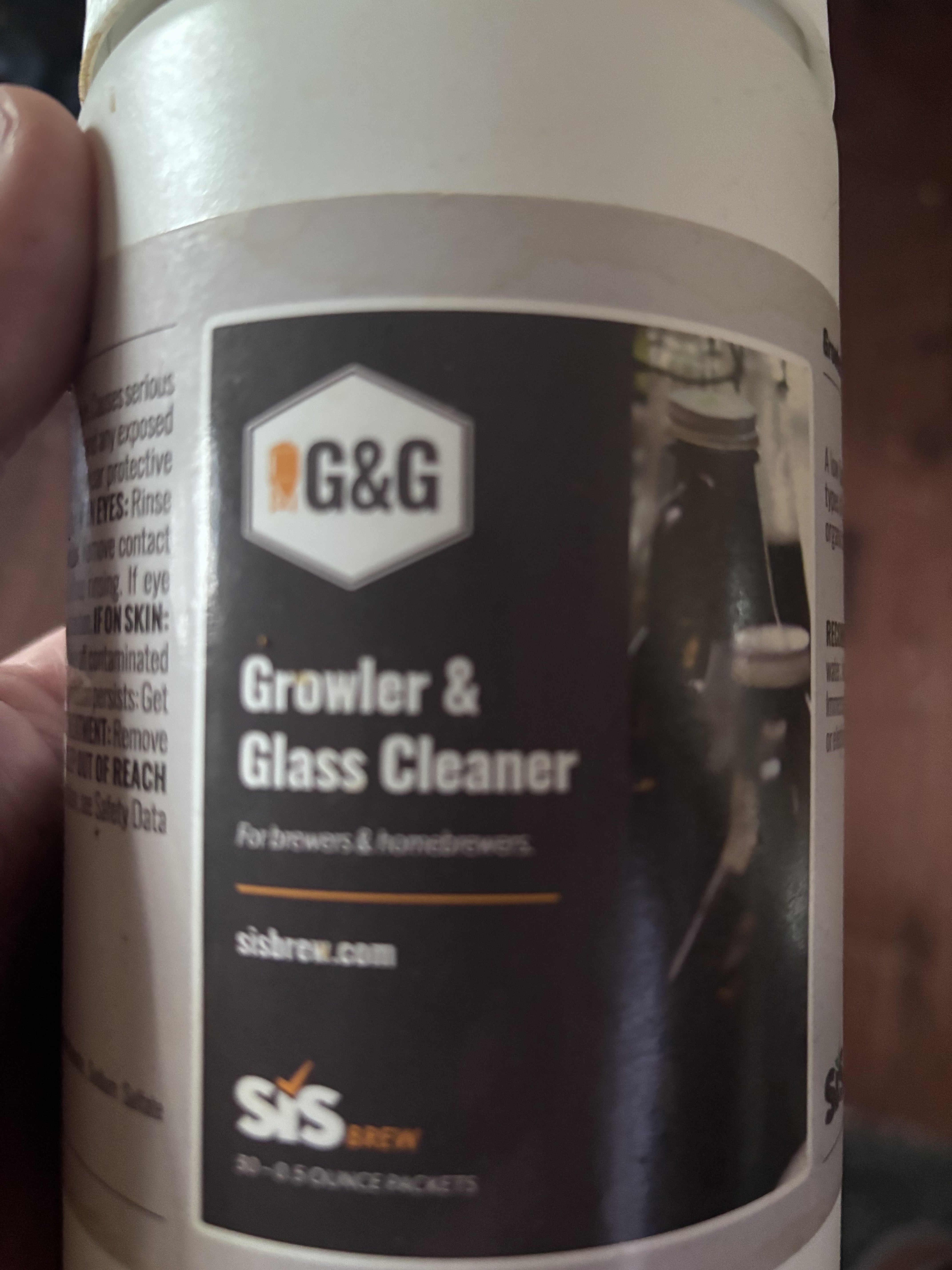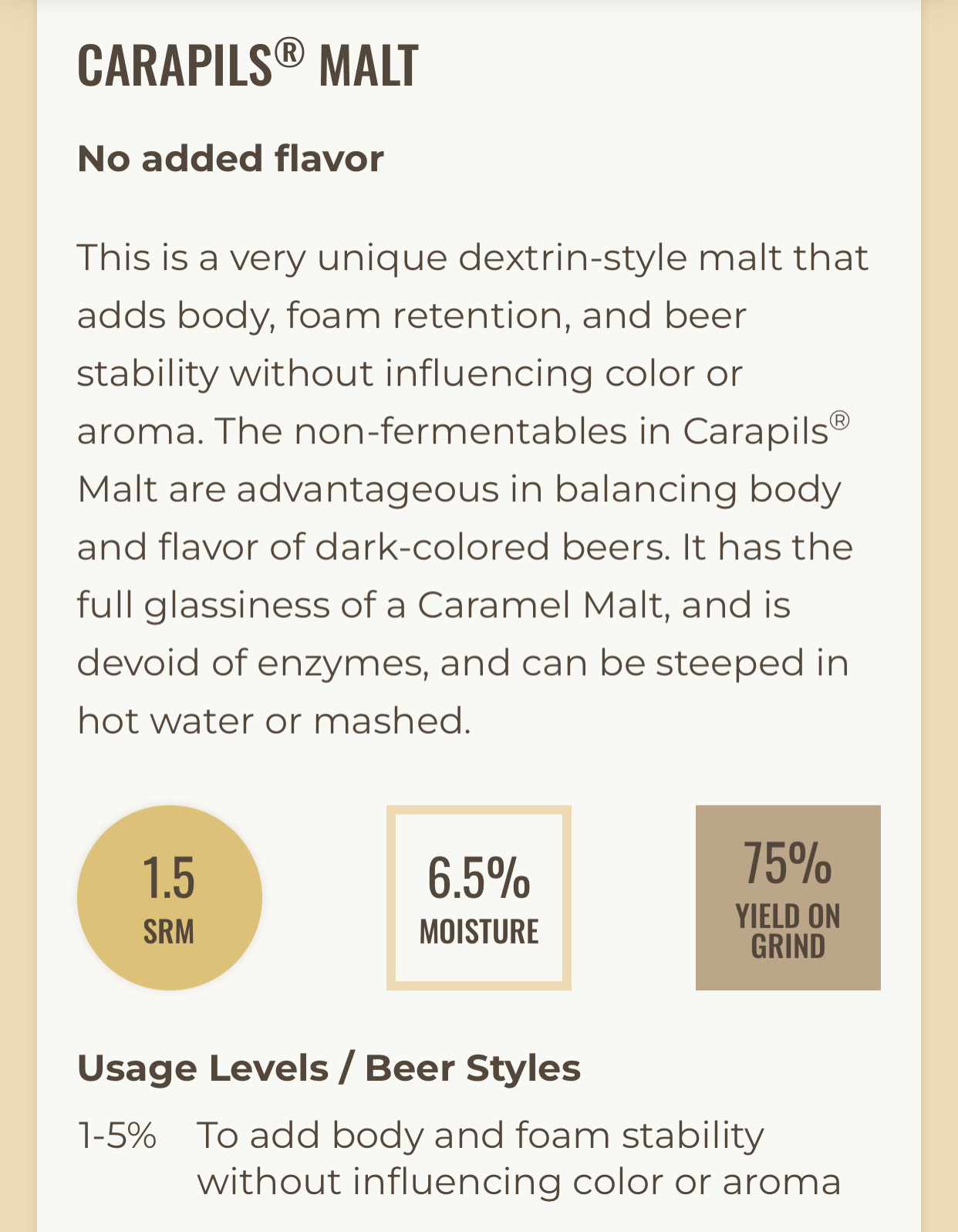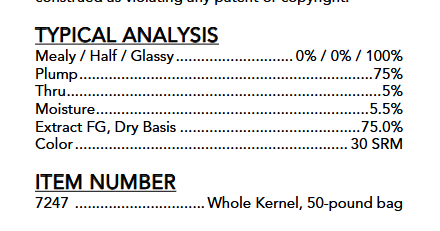I thought you guys might find this interesting. These are pictures of a domestic premium lager that I kegged on Friday, a style not well know for its long lasting head. This beer is the product of four years of intensive development and is among the finest, most carefully refined recipes that I brew. The grain bill is ~40% pils malt, 30% 6-row, 20% corn meal, 10% instant rice. The lager is twelve days old and was kegged a bit less than two days ago. I kegged it on Friday, pressurized the keg to 20 psi, then let it sit for two days.
It's close to fully carbed, but needs another day. It's currently pouring at ~8psi--I run very low pressure on my rig. I set my watch next to the
properly beer clean glass and took pictures until the foam subsided. Obviously, the 30% six-row is helping, but I'll argue that it isn't helping as much as we're lead to believe--I think modern 6-row is much, much, much closer to 2-row than the hairy chested stuff that we used to get even twenty years ago. I love 6-row but I'm starting to use it less and less because it's expensive and becoming increasingly indistinguishable from modern 2-row.
This is one of my most carefully refined recipes in a properly beer clean glass. Personally, I think beer foam is more process driven than ingredient driven.
There are no silver bullets in homebrewing.
View attachment 871622View attachment 871623View attachment 871625View attachment 871626
Edit: I'm currently furiously scrubbing the walls behind my stove. I had no idea all that stuff was there, but the camera made it visible. Yuck!!!!



















































![Craft A Brew - Safale S-04 Dry Yeast - Fermentis - English Ale Dry Yeast - For English and American Ales and Hard Apple Ciders - Ingredients for Home Brewing - Beer Making Supplies - [1 Pack]](https://m.media-amazon.com/images/I/41fVGNh6JfL._SL500_.jpg)






